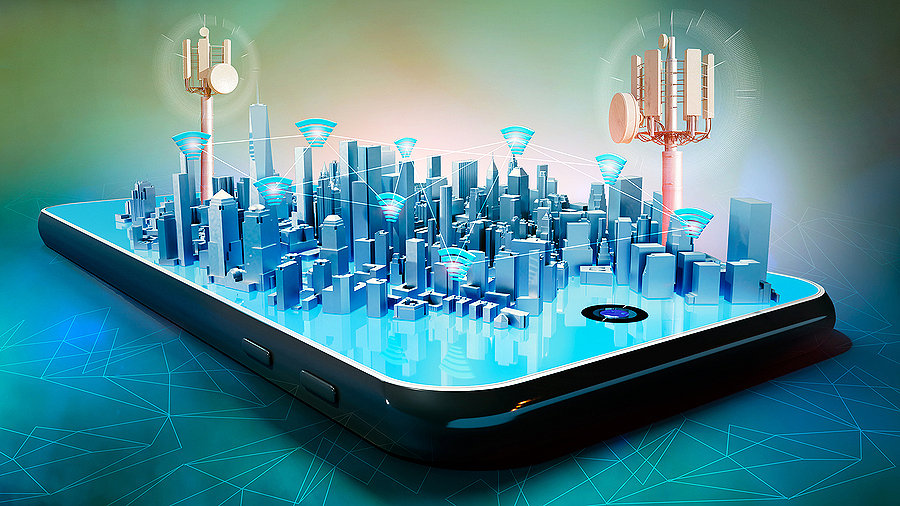IoT Technologies: Powering the Future of Smart Living

IoT technologies are transforming daily life, enabling automation across cities, buildings, transportation, retail, and healthcare. These advancements embed smart capabilities that prioritize convenience, safety, and efficiency, seamlessly connecting the physical and digital worlds. As demand for instant, intelligent interactions grows, IoT is evolving into a pervasive force that will continue to shape our future.
To meet this growing demand, data processing and AI must shift closer to the edge. Latency associated with traditional cloud-based systems limits real-time applications such as augmented reality, smart homes, and Vehicle-to-Everything (V2X) communications. The rise of edge data centers and advancements in wireless infrastructure like 5G-Advanced and 6G are crucial for ultra-low latency and increased bandwidth. These innovations rely on precision timing, which is fundamental for synchronizing networks and enabling high-speed data transmission.
Edge Datacenters and Precision Timing
Edge datacenters are pivotal to IoT’s future, requiring precise time synchronization for efficient operation. IEEE 1588 PTP technology relies on stable oscillators to filter time packets effectively. MEMS TCXOs outperform quartz TCXOs, offering 5x greater stability during temperature fluctuations. This stability ensures better performance in demanding environments like datacenters, where processors generate heat and require cooling.
As bandwidth requirements grow to 400G, 800G, and beyond, minimizing phase jitter becomes critical for data transmission. MEMS oscillators are 10x less sensitive to noise than quartz alternatives, making them ideal for modern networks. Additionally, their configurability supports lower power consumption, a key advantage for next-generation telecommunication.
MEMS in IoT Devices
Inside IoT devices, achieving optimal performance within strict size and power constraints is paramount. Devices like wearables, smart tags, and sensors require lightweight, compact designs to meet user expectations and operational needs. Traditional quartz crystals, limited by size and sensitivity to environmental factors, pose challenges for miniaturization. MEMS technology offers a solution with resonators that are up to 10x smaller and more resilient to shock and vibration.
MEMS-based oscillators also exhibit superior temperature stability, enhancing IoT performance in diverse environments. For instance, MEMS resonators can operate efficiently between -40°C and 125°C, making them ideal for both consumer and industrial applications.
Advancing Miniaturization with MEMS Technology
The miniaturization enabled by MEMS is driving IoT innovation. MEMS resonators are compact enough to be integrated into the same package as microcontrollers or system-on-chip (SoC) components, eliminating the need for separate housing. This level of integration is unattainable with quartz due to its reliance on external packaging and sensitivity to environmental stressors.
As IoT applications demand smaller, more efficient designs, MEMS-based products are setting new benchmarks for performance and scalability. By overcoming the limitations of traditional quartz oscillators, MEMS technology is empowering the next wave of intelligent IoT devices.
Most Asked Question in the FAQ
4G LTE Cat-1bis modules are a type of wireless communication module designed for the LTE (Long-Term Evolution) network. They are an enhancement of the original Category 1 (Cat-1) LTE modules and offer some specific features and improvements. Here are the key aspects of 4G LTE Cat-1bis modules:
- Enhanced Data Rates: While standard Cat-1 modules support data rates up to 10 Mbps for download and 5 Mbps for upload, Cat-1bis modules are designed to provide improved data rates. The exact speeds can vary, but they are generally higher than the basic Cat-1 specifications.
- Power Efficiency: Cat-1bis modules are designed to be more power-efficient compared to their predecessors. This makes them suitable for IoT devices that require a balance between moderate data rate requirements and long battery life.
- Lower Complexity: These modules are less complex than higher category LTE modules (such as Cat-4 or Cat-6), which makes them a cost-effective solution for applications that do not require very high data rates.
- Applications: 4G LTE Cat-1bis modules are ideal for a range of IoT and M2M (Machine to Machine) applications that require better connectivity than 2G or 3G but do not necessarily need the high speeds offered by more advanced LTE categories. These include telematics, smart metering, security systems, remote monitoring, and other IoT applications.
- Backward Compatibility: Like other LTE technologies, Cat-1bis modules are typically backward compatible with existing 2G and 3G networks, ensuring connectivity even in areas where 4G coverage is not available.
- VoLTE Support: Some Cat-1bis modules support Voice over LTE (VoLTE), which can be a critical feature for certain applications that require voice communication capabilities.
In summary, 4G LTE Cat-1bis modules provide a balanced solution for IoT and M2M applications, offering enhanced data rates and power efficiency compared to standard Cat-1 LTE modules, without the complexity and cost of higher category LTE technologies.




























































